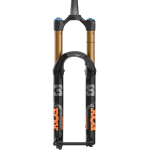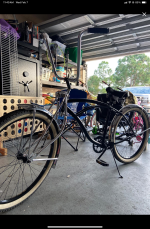taiwwa
1 W
So generally the advice is to not install a hub motor on a suspension fork but grin on their product page specifically mentions suspension forks as good for the front hub.
Maybe a cheaper design is heavier and more durable? It seems that a lot of bicycle expense comes in weight reduction designs and that cheaper designs are actually more durable and stronger. I’m guessing there are some suspension forks which are just a spring and air pressure and without any oil or gaskets that can leak.
Suspension forks being perfectly round are better for the clamps of the torque arm.
Heavy direct drive motors in my experience transmit a lot of vibration and so a suspension fork would be a good addition if viable.
Maybe a cheaper design is heavier and more durable? It seems that a lot of bicycle expense comes in weight reduction designs and that cheaper designs are actually more durable and stronger. I’m guessing there are some suspension forks which are just a spring and air pressure and without any oil or gaskets that can leak.
Suspension forks being perfectly round are better for the clamps of the torque arm.
Heavy direct drive motors in my experience transmit a lot of vibration and so a suspension fork would be a good addition if viable.



